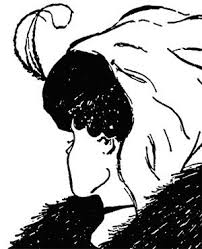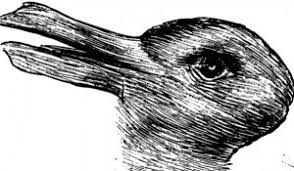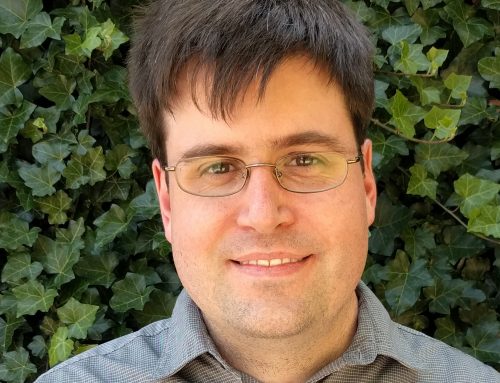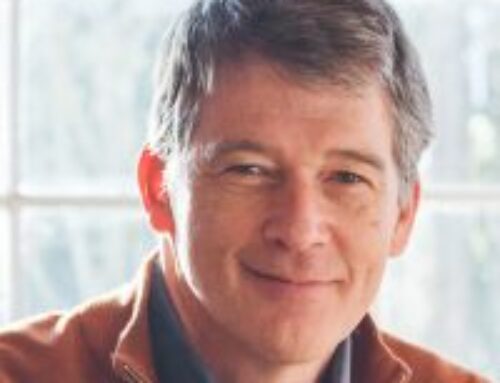As a research scientist and a Christian, I am interested in what and how we can know about the world and the Bible. The basic questions of epistemology (how and what we know) are equally relevant to both science and the Bible. In this essay, I will examine some of the basic questions raised by a revolution in philosophy of science, explore those same issues relating to biblical interpretation, and discuss how doing science and doing biblical interpretation, while different from one another, are also similar in important ways.
Doing Science
In the 1950s, a revolution in the philosophy of science occurred that radically modified the foundation for science and the method of science. Prior to the revolution, virtually all philosophers of science were “logical positivists.” They shared a view of science and its place in culture. For them, science was about “objective facts” and, therefore, the results more certain. The facts, they would say, are objective because when we observe phenomenon, our minds are passive; sensations are impressed on our minds like a wax seal is impressed on wax. Later, we can make mistakes in interpreting this experience, but the initial experience, what is presented to the eye, cannot be wrong. The logical positivists viewed observation as a mechanical process by which everyone observing the same objects would get the same result. The scientific method, the standard way to do science even today, was designed to take advantage of the fact that the mind is passive during observation. The method was also seen as a mechanical process, whose goal was to prevent the investigators’ biases and presuppositions from interfering with the “objective” observations. If scientists followed the method, every scientist would get the same result. On this basis, then, science was believed to be more objective and certain than other pursuits.


The revolutionaries’ point about the mind being active while observing came home to me one July afternoon in the late 1970s when I was helping teach a class at the Yellowstone Institute. We were collecting aquatic insects in a river in the park when a thunderstorm came over the ridge, bringing with it innumerable lightning strikes as only those mountain storms can produce. As the storm developed, I made the off-hand comment to the students that lightning can go from the ground to the air as well as from the air to the ground. Suddenly many people in the class saw the lightning go both ways for the first time in their lives. I interpreted their new ability to see as confirmation of the revolutionaries’ claim that the mind is active while observing. Before my comment, the students were presupposed to believe that lightning only went from the air to the ground, and therefore, their minds constructed that picture from the sensations of their eyes. They saw what they expected to see based on everything they believed to be true (their preunderstanding). They did not first see a neutral situation (stationary lightning) and then interpret which way it was going. One sees lightning move down or up in a particular case, never the neutral case. This experience seemed to confirm that the mind is indeed active while observing.
But what are we to conclude about the people who did not see the lightning go from the ground to the air? Why did they not see it? Maybe they were right after all. We can visualize a dialogue between two people who see the lightning differently:
Person 1: “See! It goes from the ground to the air.”
Person 2: “No, it does not. It goes from the air to the ground.”
And so on, ad infinitum.
This interchange will never end by appealing to the facts because the facts depend on what the mind is inclined to see. It appears that observation is subjective if the mind is active, and therefore, we must conclude that we cannot know what is objectively true. One person has his perspective, and another person has a different perspective, and there appears to be no standard or arbiter to resolve their difference. Taking a vote of all the people observing a lightning storm cannot determine with certainty what the true situation is. Furthermore, we cannot get outside of our minds “to see what is really there.” Finally, if observation is subjective, then we can no longer view the mind as a passive machine, nor can we assume that following the scientific method will give everyone the same result.
Many philosophers have now concluded that because observation is subjective, we have no means for deciding between two options. I disagree. As a Christian, I believe that a God-created reality exists. A lightning strike either goes from the air to the ground or from the ground to the air no matter what I think I see. But given the subjective nature of observation, how can we know what is true? Although I agree with the revolutionaries that observation involves an active mind and is not a mechanical process, I do not see the search for truth as hopeless. Rather, I would argue that observation is a skill that we learn and can get better at over time.
I would describe the skill of observation as follows. We start with all we believe to be true (our preunderstanding), and then one of two things happens when we observe something new. If what we observe fits with our preunderstanding, it becomes one more piece of our preunderstanding. If it does not fit, we begin a process of considering new possibilities. We start with possibilities that require the least change to our preunderstanding, and we continue until we find a possibility that looks promising—that is, one that seems to describe what we have observed better than what we believed before. We consider a situation that would confirm the possibility. The more important the issue or observation, the more we examine the possibility until we are satisfied that changing our preunderstanding is warranted. In the end, a new observation may or may not lead to a radical change in our preunderstanding.
All skills, including observation, must be learned by practice, and we can succeed or fail to do a skill as we are learning. Take the example of riding a bicycle. At first, we focus on learning all the “rules”—all the sub-skills involved in riding a bike, like balancing and leaning into a turn. We cannot do them all together, but by practicing, we get more competent even though we may succeed or fail along the way. At some point we no longer think about the rules; we just ride the bicycle. Acting skillfully—riding the bike in our example—is how we measure the success of any skill. We can appeal to no other standard.
Because observation is a skill, we can also get better at it, but like riding a bike, we must practice the rules (the sub-skills) to become skillful observers. For example, we must learn to make correct judgments, and this takes practice. No mechanical process can replace making judgments. We must also learn to become highly sensitive to clues that our current lens (our preunderstanding) might not be right. In the lightning example, when people considered the possibility that lightning might go from the ground to the air—something they had not considered before—they suddenly saw it go from the ground to the air. In order to see what is really there, one must in some sense be expecting the right thing. Finally, we must learn to be open to the possibility that we may be wrong and learn to consider other possible options.
Doing Biblical Interpretation
While there are some significant differences between doing scientific observation and doing biblical interpretation, interpreting the Bible raises many of the same issues that we find in science.
Some people see biblical interpretation as the positivists saw scientific observation—that is, as a mechanical process where the mind is mostly passive. The most radical version of this interpretive method is this: one just reads the words, and what they mean is clear. This view locates the meaning in the words and assumes that they have clear definitions. In a less radical version, but still a mechanical process, the interpreter looks up the possible word meanings in a lexicon (dictionary) and shuffles the possible meanings in a sentence until he or she hits the one that makes the most sense. So, for example, reading a sentence like “The First National Bank is on the bank of the Willamette River,” one would notice that the word “bank” occurs twice in the sentence with different meanings. This method, while allowing greater complexity to the interpretive process, is still mostly a mechanical process of determining the word meanings. I reject these mechanical theories of biblical interpretation on the same grounds I rejected the positivists’ perspective on observation. The theory that the mind is active and that biblical interpretation, like observation, is a skill better captures the process of interpretation.
Others view interpreting the Bible more like the revolutionaries in philosophy of science: interpretation is subjective, and we can’t know for sure what a text means. I contend, however, that even though observation and interpretation are subjective, we can know truths both in science and in the Bible, and furthermore, that “how we know” is similar in each case. So now let’s explore in the context of biblical interpretation the same issues I discussed relating to science.
If we agree with the revolutionaries that scientific interpretation is a skill, we face their same problem when we interpret the Bible: How do we proceed if two people do not agree on the interpretation of a passage? On what grounds can we decide which interpretation is right? You have your interpretation, and I have mine. Like our lightning example, the situation looks like an impasse.
Here is where understanding some significant differences between observation of the world and interpretation of the Bible can be helpful. When observing something through our senses, our sensations are immediately transformed into an object (a whole). We are not aware of the sensations; we observe them tacitly, not consciously. Even if we are not sure of what we see, we still see an object, but it is not clear and distinct. When interpreting the Bible, however, we are reading the words (parts) and constructing the meaning (the whole). We are better able to consciously construct different interpretations of a text than we can construct different interpretations of something we see in nature because we can slow down the observation process and focus on the parts (words, syntax, etc.). And, as we interact with the parts and the possible combinations, we may suddenly see a new possible meaning.
A second difference between observation of the world and interpretation of the Bible is also significant. When we observe nature, our senses present us with sensations, and the preunderstanding of our mind acts as a lens to construct the observation. Reading a text entails a more complex process. Not only must we observe and interpret the words on the page, we must also ask this question: What did the author mean when he wrote it? The author’s intent is the key to resolving differences between interpretations, and so the goal is to construct as much of the author’s intent as possible. Just as the scientist must develop the skill of making right judgments, the Bible interpreter must learn the skill of selecting the option that best fits with the arrangement of the parts given the context of the biblical author’s preunderstanding—that is, everything the biblical author believes to be true. Learning this sub-skill is necessary for becoming a good, skilled interpreter of the Bible. In the end, the best interpretation of a passage is the one that considers all the clues in the text to arrive at a correct understanding of the biblical author’s preunderstanding.
Conclusion
In the end, most philosophers of science gave up the idea that “how we know” is a mechanical process operating on a passive mind. I think they were right to do so. Coming to know is a skill, not a mechanical process—either for scientific observation or for biblical interpretation.
The implications that follow from this conclusion are profound. We cannot appeal to “objective” facts because, in some sense, they depend on the theory in which they are embedded, the lens through which they are seen. Facts that are highly relevant in one understanding may be tangential and understood differently in another. Thus, science loses its privileged position in culture as the gold standard for how to know because, as it turns out, science is not more objective or its results more certain than other endeavors—like interpreting the Bible.
Scientific observation and biblical interpretation are both skill-based and require an active mind. While some significant differences exist between the two processes, both must grapple with human preunderstanding: the scientist’s, the interpreter’s, and, in biblical interpretation, the biblical author’s. And both must address how to resolve conflicting conclusions, which is possible as both scientists and interpreters become more skillful at their endeavors.
This article first appeared in the Spring 2020 issue of Colloquy, Gutenberg College’s free quarterly newsletter. Subscribe here.





